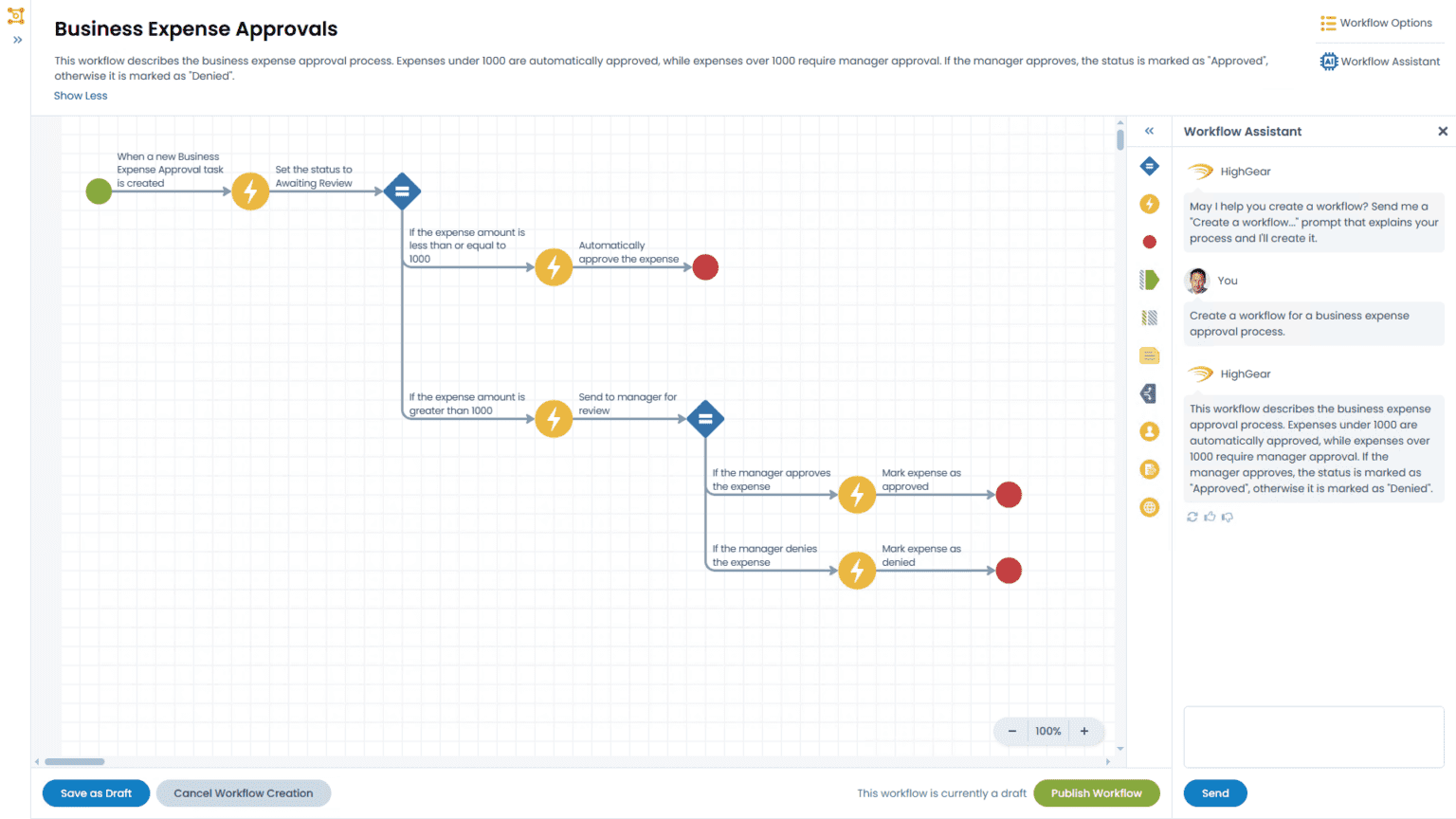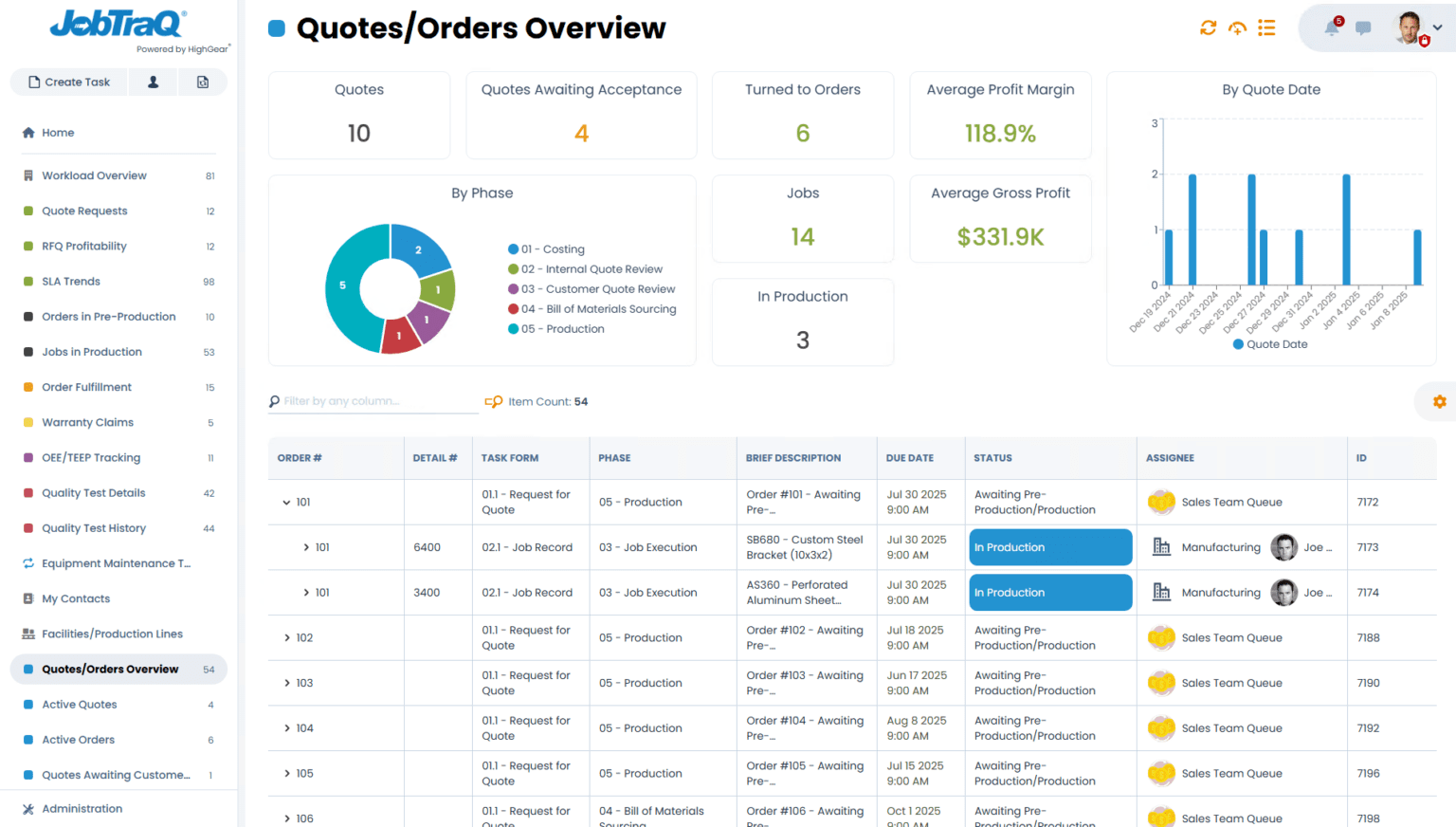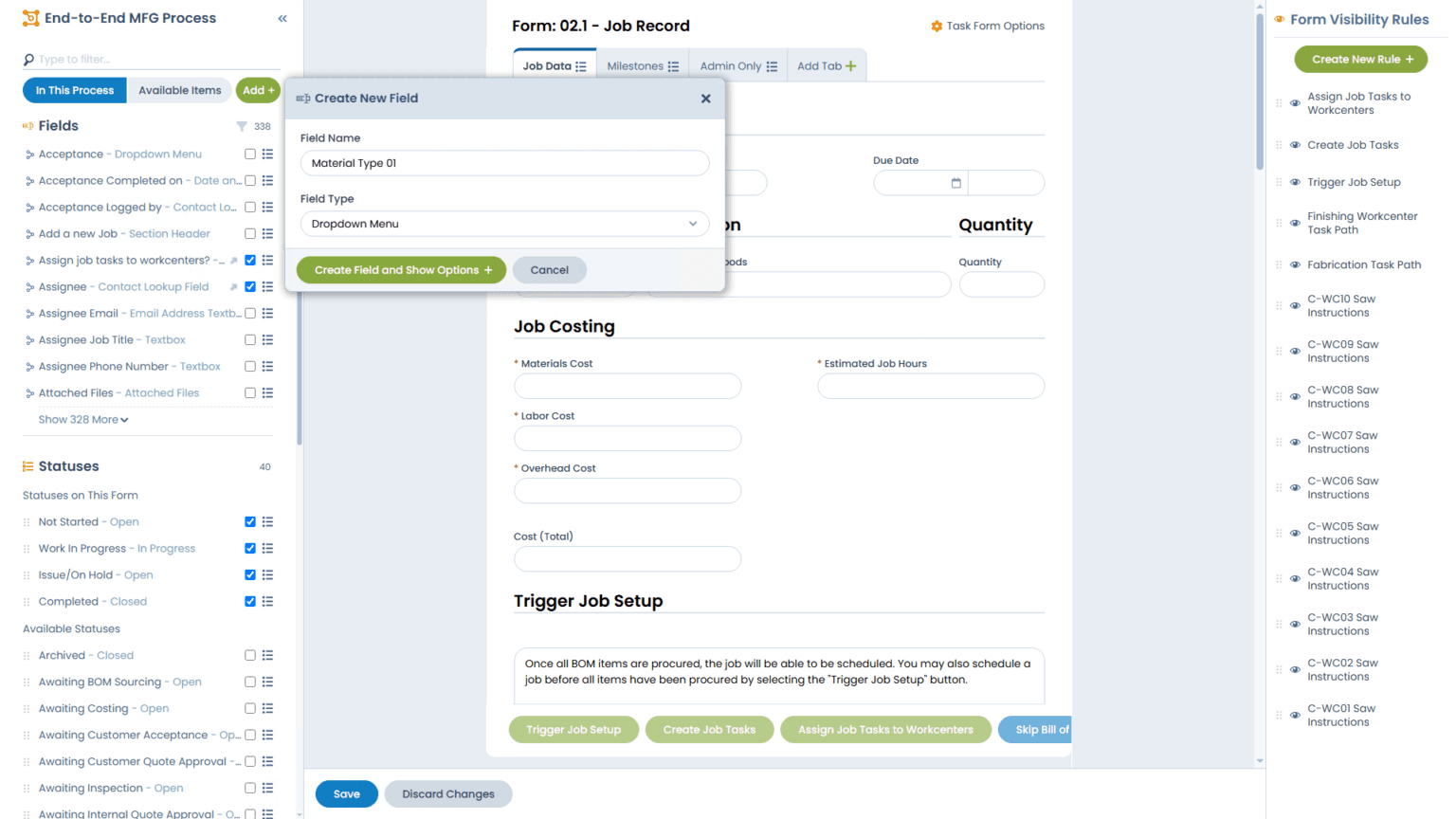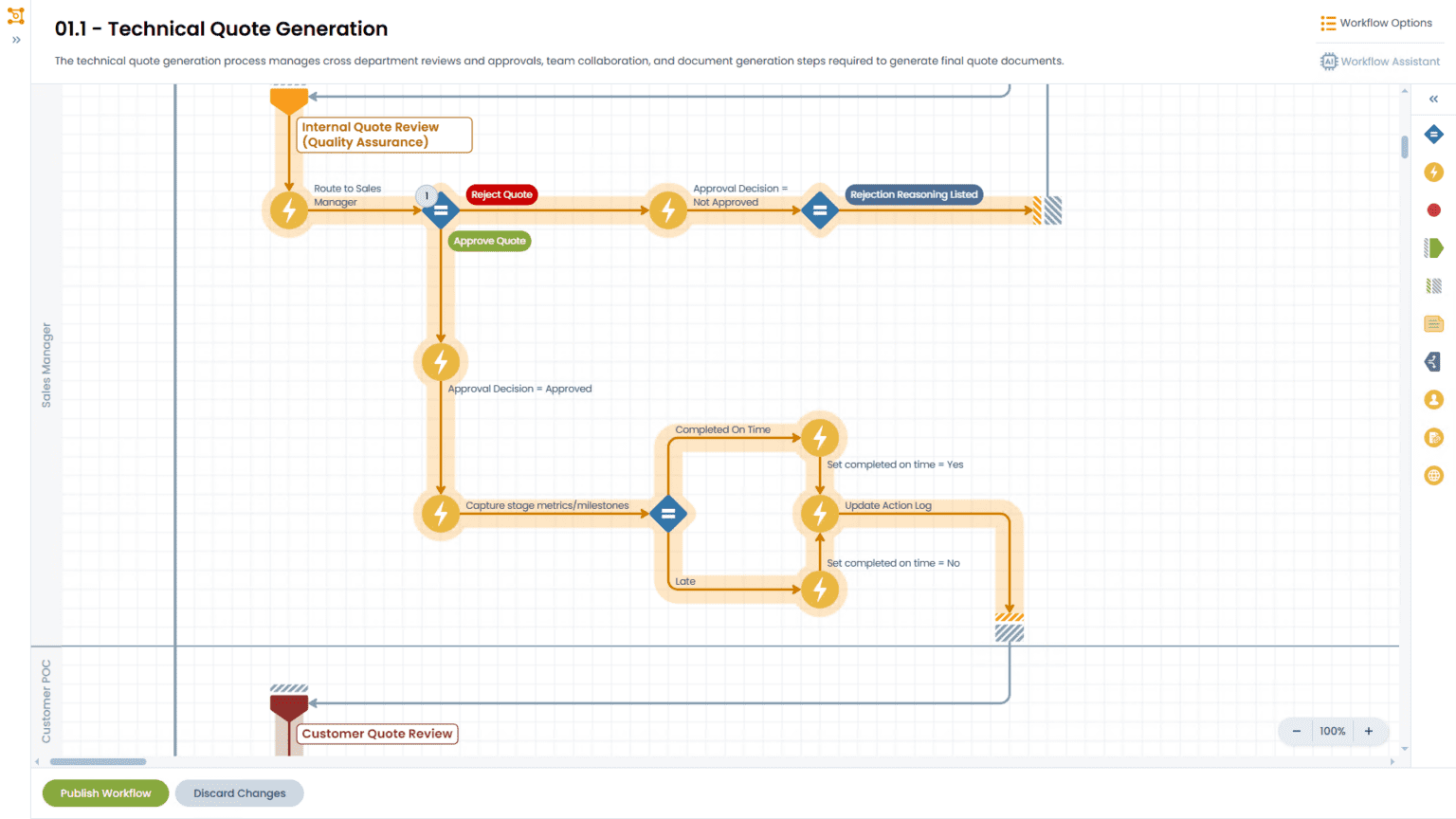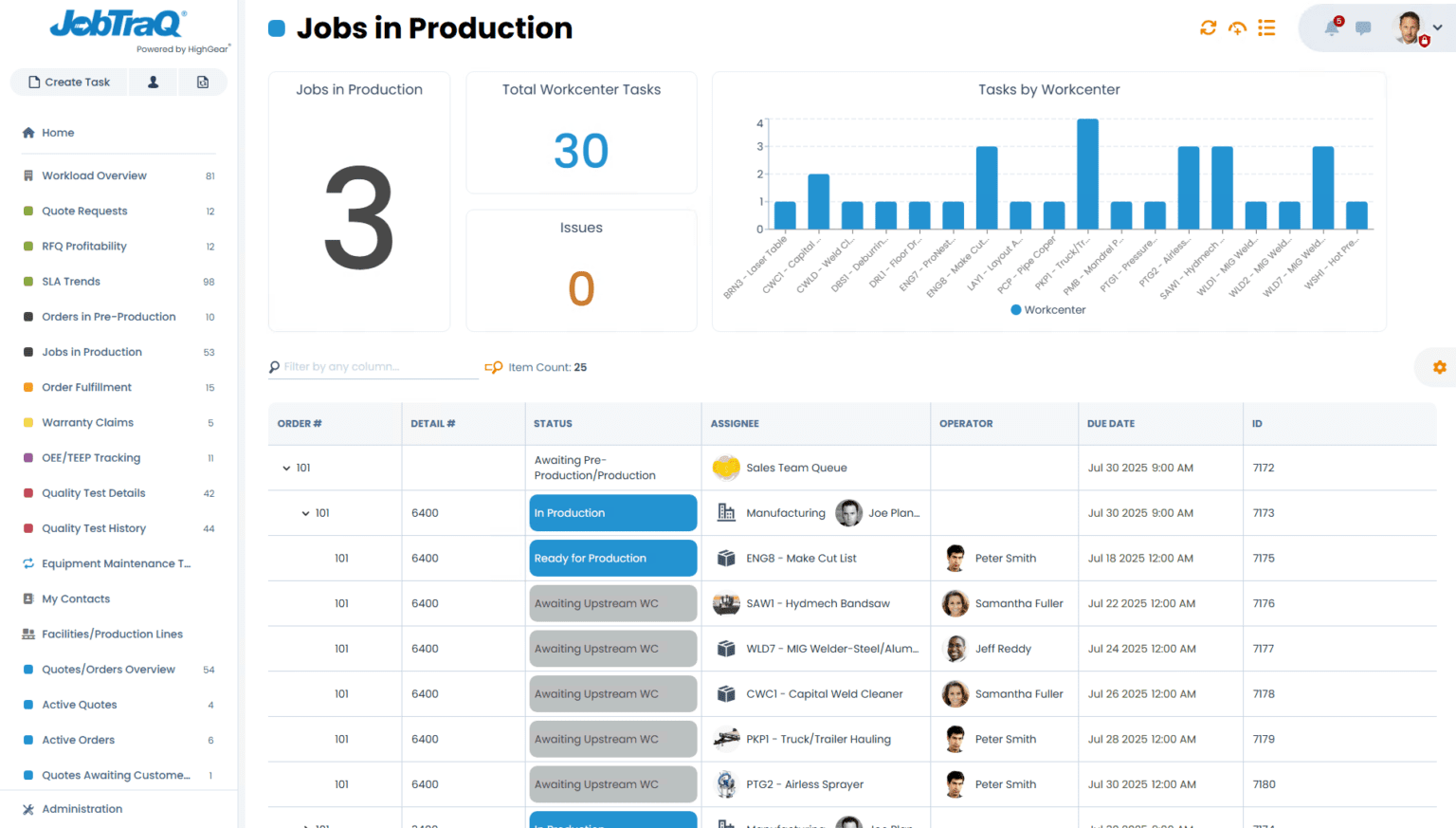The ROI Question Everyone’s Asking
If you’re a small to mid-size manufacturer, especially one managing high-mix, low-volume (HMLV) work, your investment decisions come down to one simple thing: return on investment.
And not just eventual ROI. You’re asking:
- How long will this take to pay off?
- Will I need to hire a consultant or an IT team to get there?
- Can we see benefits before our next customer audit – or is this another six-month project?
With JobTraQ, the answer to all of that is refreshingly short.
Many manufacturers see measurable ROI within the first 30–60 days of implementing JobTraQ. Full payback? Often well within the first year.
Let’s break down how that’s possible – and what drives such fast returns.
What ROI Looks Like in Manufacturing Workflow Automation
Return on investment with JobTraQ comes from eliminating the friction points that slow your operations, cost you money, and frustrate your team.
Here’s where the ROI comes from:
|
ROI Driver |
What It Looks Like |
|
Time savings |
Less time spent chasing status updates or recreating lost paperwork |
|
Error reduction |
Fewer missed approvals, forgotten steps, or noncompliant inspections |
|
Visibility |
Real-time dashboards reduce overcommunication, delay, and finger-pointing |
|
Audit readiness |
No more late-night prep or paper trail scrambling |
|
Employee productivity |
More jobs processed per person, fewer fire drills |
|
Reduced rework |
Catching issues earlier in the workflow = less scrap and delay |
These aren’t theoretical improvements – they’re what our customers report after putting just one or two workflows into production.
Realistic ROI Timeline With JobTraQ
Here’s what a typical ROI timeline looks like for a 40–150 person HMLV shop:
Week 1: Setup & Use Case Selection
- JobTraQ provisioned (cloud or on-prem)
- Team picks 1–2 processes to automate (often ECOs, travelers, or inspection workflows)
- Quick start resources or kickoff call provided
ROI impact: None yet, but you’re laying the foundation.
Weeks 2–3: First Workflow Goes Live
- Use drag-and-drop builder to digitize a real process
- Configure roles, tasks, alerts, and forms
- Add users, test workflow, and refine
ROI impact: Immediate visibility. Teams stop asking, “Where’s the job?”
Weeks 4–6: Efficiency Kicks In
- Bottlenecks become obvious – and fixable
- Notifications reduce manual follow-up
- Status updates happen in real-time, not in standups
ROI impact: Time savings start showing up on the floor. Less firefighting.
Months 2–3: Expansion to Additional Workflows
- Add NCR/CAPA tracking, audit documentation, or material handling
- Reporting dashboards begin highlighting waste and lag
ROI impact: Productivity increase per person. Audit readiness jumps. Scrap rates may begin to fall.
Months 4–12: Culture Shift + Long-Term ROI
- Department leads start building their own workflows
- Workflow improvement becomes a continuous practice
- JobTraQ becomes a system of record for operations – not just a bandaid
ROI impact: Full return on investment, often with multiples (2–5×) in annual savings.
Example ROI Scenarios
Let’s put some numbers behind it. Here are a few example payback models based on common workflow issues:
Example 1: Missed Status Updates → Rush Costs
- A typical high-mix job gets stuck in WIP due to lost traveler or missed handoff
- Supervisor only finds out days later, and the job must be expedited
- Rush shipping = $1,200
- Extra overtime = $900
- Total = $2,100
With JobTraQ: Traveler is digital. Status updates are automatic. Bottlenecks trigger alerts.
Savings in 1 event: $2,100
Payback in: 1–2 incidents
Example 2: Audit Failure Risk
- Manufacturer gets dinged for missing inspection logs and approval signatures
- Cost of remediation = 100+ hours
- Potential lost contract = tens of thousands
With JobTraQ: Digital workflows enforce documentation. Every action is logged and timestamped.
Savings in 1 audit cycle: $5,000–$50,000 depending on industry
Example 3: Time Reclaimed From Manual Tracking
- Production coordinator spends 5 hours/week updating spreadsheets and chasing status updates
- Hourly rate = $45/hr
- Annual cost = $11,700
With JobTraQ: Automated routing and real-time dashboards eliminate the need for manual status tracking
ROI in saved labor alone: ~$1,000/month from just one user
Multiply that across 5–10 roles, and the ROI compounds quickly.
ROI Without IT Overhead
One of the biggest accelerators of ROI with JobTraQ is that you don’t need a dedicated IT department or outside consultants to start seeing value.
JobTraQ is:
- No-code: Build workflows with drag-and-drop tools
- Role-based: Give department leaders control over their own processes
- Fast to deploy: Many users go live in 30 days or less
- Easy to improve: Iterate in real time, no dev cycles needed
This drastically reduces typical costs associated with ERP or MES deployments, where consultants, long timelines, and change management slow ROI.
How to Accelerate ROI Even Further
Want to shorten your ROI timeline? Here are some best practices from our highest-performing trial users:
- Start With a High-Pain Workflow
Choose something that causes daily frustration – like ECOs, inspection approvals, or job traveler routing.
- Pick a Cross-Functional Team
Use 3–5 people across roles (engineer, production lead, QA manager) to pilot the process and give feedback early.
- Set Clear Success Metrics
Examples:
- Reduce ECO approval time from 3 days to 1
- Eliminate missed traveler steps by 90%
- Improve inspection documentation completeness to 100%
- Share Results Early and Often
Use JobTraQ’s built-in dashboards to show progress and build momentum internally.
What ROI Doesn’t Look Like
We’ve also seen situations where ROI takes longer – almost always for avoidable reasons:
- Over-customizing too early instead of launching simple workflows first
- Lack of ownership – no one assigned to “own” the rollout
- Waiting for IT to integrate everything before using the tool
- Trying to solve 10 problems at once rather than starting with one
With the right focus and pacing, these are easy to sidestep.
Customer Feedback on ROI
“We saw measurable improvements within 3 weeks of our first workflow going live. Less email. Fewer missed steps. And our quality lead finally stopped printing inspection logs.”
– Operations Director, Contract Manufacturer
“Our team was shocked how quickly we got real-time visibility. JobTraQ didn’t just pay for itself – it made us rethink how we manage processes.”
– Plant Manager, Aerospace Supplier
TL;DR: JobTraQ ROI Timeline at a Glance
|
Milestone |
Timeline |
Impact |
|
First Workflow Live |
Week 2–3 |
Visibility and time savings begin |
|
First ROI Realized |
Week 4–6 |
Less delay, better coordination |
|
Expansion Phase |
Month 2–3 |
Multiply gains across workflows |
|
Full Payback |
Month 3–12 |
Cost savings, compliance, productivity lift |
Ready to See Your ROI?
If you’re tired of throwing labor hours at workflow chaos, JobTraQ might be your fastest win this year.
Start your 45-day trial
Build a real workflow. Run it with your team. Measure results.
Or talk to us about your use case – we’ll model the ROI with you.

